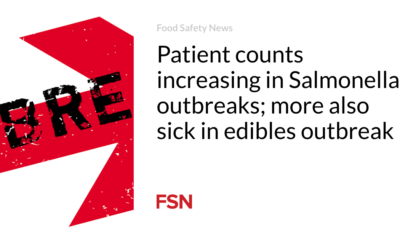Tarnell Brown is an economist and analyst from Atlanta.
Finance
How drug prohibition increases crime rates

This is the fourth in my series on the social costs of drug prohibition. You can read part one (prison-industrial complex) here, part two (militarization of police) here, and part three (civilian asset forfeiture).
Prohibition policies are often sold to a willing audience on the grounds of fighting crime. This is especially true of the rhetoric about violent crime, as government policy has long assumed a causal link between drug use and an increase in violent crime. An example of this hypothesized relationship is the laws that prohibit possession of firearms by individuals addicted to or illegal users of controlled substances (McGinty, Choksy, & Wintemute, 2016). The underlying belief is that violence is inherently a psychopharmacological side effect of drug use. This belief among policymakers persists despite the abundance of research showing that the majority of drug-related violence is systemic – the result of the need to operate in a black market – rather than psychopharmacological (Goldstein, Brownstein, & Ryan, 1992). Simply put, it is the prohibition that causes violence at a greater rate than the use of the prohibited substances.
The reasons for this should be as clear to policymakers as they are to economists, sociologists, political scientists and criminologists, yet the paradigm persists. Because law enforcement efforts such as prohibitions reduce supply, while demand remains relatively inelastic even with the arrest of a drug userS, prices rise. This makes the control and protection of both smuggling routes and sales areas more valuable, increasing tensions between rival organizations and gangs. Although these competing organizations sometimes enter into agreements, the illegal nature of their activities prevents them from using legal conflict resolution options, such as courts, to mediate disagreements and enforce agreements (Castillo & Kronick, 2020) . As such, the lure of higher profits makes violence an attractive alternative to fulfilling low-stakes territorial agreements. Anti-drug policy naturally creates a trade-off between lower supply and more violence.
This would be a policy failure if increased violence were the only negative externality associated with current drug policies, and as we will discuss later, much of the violence caused by these policies takes place outside our domestic borders. We started this series by detailing how the paradigms created by prohibition shaped today’s drug laws and enforcement mechanisms, and looking at the similarities between the two. However, there is one major difference to take into account. Alcohol production took place domestically, so the associated violence was concentrated in local American cities. This led to a public backlash against the Eighteenth Amendment, resulting in its repeal. Much of the production of illegal substances such as cocaine and heroin takes place in other countries, which then smuggle the goods into the United States. The result is that much of the violence caused by domestic prohibition laws is shifted to countries like Mexico and Afghanistan, concealing the human costs for which domestic politicians should be responsible.
However, violent crimes are not the only area that drug policy impacts, and the relationship between this set of trade-offs often goes unnoticed by the public. As previously noted, there are opportunity costs associated with efforts to stem the flow of controlled substances and maximize the incarceration of sellers and users. Grossi notes that the The influx of prisoners convicted of drug-related crimes has a displacement effect, which reduces the space available for incarcerating those who have committed other types of crimes. Furthermore, Defina and Arvanites (2002), in conducting a pooled analysis of 51 separate state-level regressions (including DC), using the FBI’s seven Index Crimes as a base measure, find a positive correlation between drug arrests and an increase of five of the seven cases of crime. Index crimes in most states. While this is not uniform across states – i.e. some states see a reduction in crime across the board as a result of drug arrests – the stronger drug enforcement policies are, the more crime there is in other areas, such as property crime. and theft.
In 2020, the Centers for Disease Control and Prevention (CDC) reported 92,700 fatal overdoses in the US; an increase of 29% compared to 2019. This rate is approximately 28 per 100,000 people almost double the rate of 14.7 per 100,000 people in 2014. Much of this explosion in overdoses has been fueled by the opioid crisis. From the discussion in my previous post, recall the concept of the Iron Law of Prohibition, the economic principle that holds that artificially imposed barriers to entry and supply exert pressure to simultaneously minimize volume and maximize profit. While drugs such as cocaine, heroin, and methamphetamine incur transaction costs associated with illicit trafficking, legal opioids were a readily available and initially legal substitute for illegal opioids such as heroin. Conversely, there are attempts to criminalize the non-medical use of legal opioids such as oxycodone has increased the trafficking and use of readily available synthetic opioids such as fentanyl.
Gottschalk (2023) provides a fascinating look back at how the opioid crisis has evolved. She traces its beginnings to the 1980s moral panic over crack, a cheaply produced derivative of cocaine that provided politicians with a convenient justification for engaging in “tough on crime” rhetoric. Despite a lack of hard, valid evidence, this rock upon which to build a political religion of comprehensive prohibition claimed that this new scourge was immediately, inevitably addictive, invariably caused violent, antisocial behavior in users, and would spawn a new generation of addicts. disabled babies who require expensive medical care throughout their lives. Although separate from the later opioid crisis itself, it provided the backdrop against which illicit synthetic opioids could flourish and create a new enemy against which policymakers could unite.
Meanwhile, pharmaceutical company Purdue Pharma, which marketed itself as a leader in groundbreaking pain relief, led the way in convincing regulators to greenlight sales of its synthetic opioid OxyContin in 1995. OxyContin and other variants of oxycodone were found to be very effective. addictive, which the manufacturers of these plastics knew in advance. Working with co-conspirators like Walmart, Walgreens, and CVS, these pills were heavily marketed, especially in rural communities, where doctors readily prescribed them to anyone who complained of pain. Soon, regulators and policymakers recognized that an epidemic was coming and took action. Predictably, instead of treating the rising tide of addiction and overdoses as a public health crisis, they responded by trying to limit the supply of these drugs, limiting the number of pills doctors could prescribe, to whom they could give them prescribing, and by creating a prescription monitoring program that criminally prosecutes doctors who exceed prescribed limits.
Ultimately, supply always follows demand, and in the absence of the desired product, substitutes will fill the gap. In this case, users addicted to oxycodone and similar synthetic derivatives turned to existing opioids available on the street, namely heroin. While interdiction efforts obviously limit the available heroin supply to some extent, it is possible to increase the potency of the available supply. Consider fentanyl, a synthetic opiate that is both available domestically with a legitimate prescription and relatively easy to smuggle across borders. Fentanyl could be that up to fifty times more powerful than heroin, which naturally increases the potency of medications laced with fentanyl. The result has been a marked increase in overdoses, both fatal and non-fatal, and in communicable diseases spread by needle sharing (Meyer, et al., 2023), (Leyton & Krausz, 2024). The tragedy lies in the fact that none of this is necessary.











